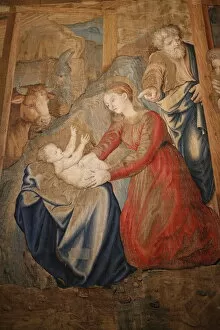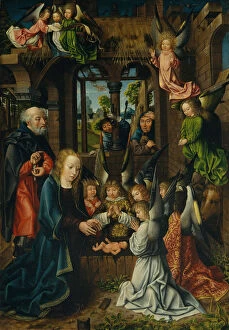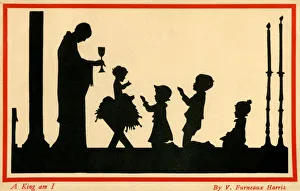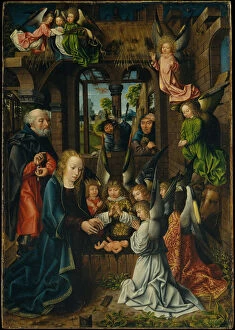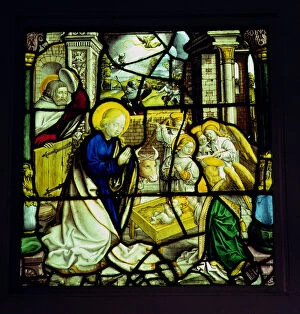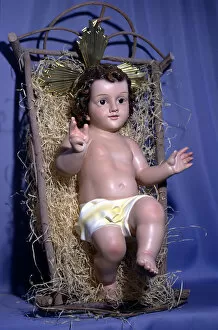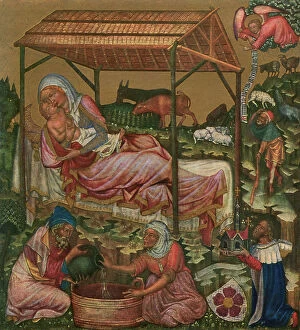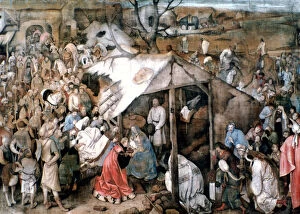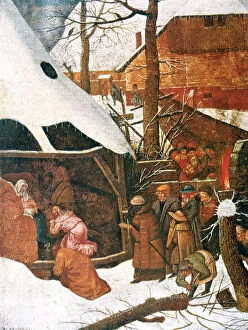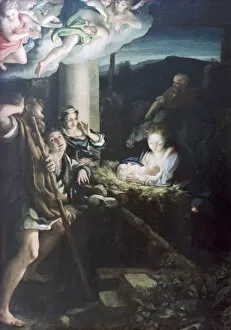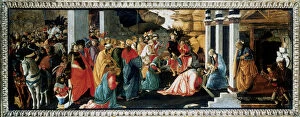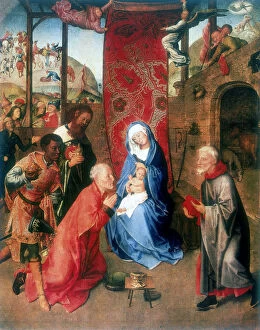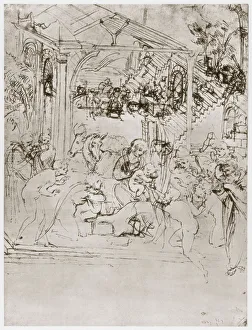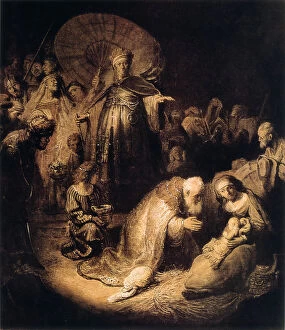Manger Collection (page 7)
"Manger: A Symbol of Divine Birth and Adoration" The manger, often associated with the Nativity scene, holds a profound significance in Christian art and tradition
All Professionally Made to Order for Quick Shipping
"Manger: A Symbol of Divine Birth and Adoration" The manger, often associated with the Nativity scene, holds a profound significance in Christian art and tradition, and is within this humble feeding trough that the miraculous birth of Jesus took place, surrounded by Mary and Joseph, shepherds, angels, and animals. In "Adoration of the Magi, " painted in 1624 by an unknown artist on canvas, we witness the Three Kings bearing gifts to honor the newborn King. Their presence symbolizes worldly recognition of Jesus' divinity. Hugo van der Goes captured a poignant moment in his painting "Adoration of the Shepherd" from 1476-1479. Here we see shepherds humbly adoring baby Jesus as they gather around him with awe-struck expressions. This portrayal emphasizes how even those considered lowly were touched by this extraordinary event. "The Nativity at Night, " created in 1640 by an anonymous artist using oil on canvas technique, depicts a serene night scene where Mary tenderly cradles her child while Joseph watches over them protectively. The soft glow emanating from baby Jesus illuminates their surroundings with divine light. Giotto's fresco masterpiece "Adoration of the Magi" dates back to c1305 and can be found in Padua's Scrovegni Chapel. Its vibrant colors bring to life this sacred moment when kings from afar offer their precious gifts to honor Christ's birth. Another depiction titled "The Nativity at Night, " painted around 1490 on oak wood paneling, captures a similar peaceful atmosphere surrounding baby Jesus lying peacefully in his makeshift bed—a reminder that God chose simplicity for His grand entrance into humanity. Beyond paintings lies physical evidence like Saint Gervais' Infant Jesus statue nestled within Haute Savoie region's church in France—representing devotion through centuries-old traditions upheld across Europe.



